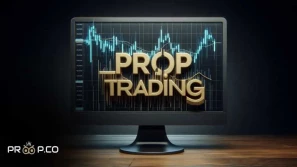Scalping is a popular trading strategy used by individuals who aim to capitalize on small price movements within very short time frames. The primary goal is to make numerous small profits over the course of a day. A scalper typically opens and closes positions within minutes, targeting only tiny changes in market price. Unlike traditional trading methods that may focus on larger, longer-term gains, scalping relies on executing many trades quickly, requiring high levels of focus, precision, and market insight.
Key Characteristics of Scalping
The scalping strategy is distinct due to its rapid-fire nature. The key characteristics include:
- Frequent Trades: Scalpers execute many trades in a day, each lasting from seconds to minutes, accumulating small profits on each.
- Small Profit Margins: Profits per trade are minimal, typically ranging from a few pips (in Forex) to small price changes in other markets.
- High Leverage: Traders often use leverage to amplify profits from small price movements, although this increases the risk.
- Focus on Liquidity: Scalpers prefer highly liquid markets where they can quickly enter and exit trades without significant price slippage.
- Low Time Exposure: Since trades are held for such short durations, scalpers experience minimal exposure to overnight market risks.
Benefits of Scalping

Potential for Quick Profits
Scalping offers a potential for quick profits due to the rapid nature of trades. Since positions are held for a very short time, traders can make several small gains throughout the day. These cumulative small profits can add up over time, especially in highly liquid markets where price movements are constant. The key to success in scalping is consistency, as traders capitalize on these minor fluctuations rather than waiting for larger, more unpredictable price swings.
Low Exposure to Market Risks
One of the advantages of scalping is the reduced exposure to market risks. Since trades are held for a very short period, scalpers avoid the uncertainty associated with longer-term positions. Market news, geopolitical events, or other external factors that can dramatically affect longer-term traders are less likely to impact scalpers significantly. By executing many small trades, scalpers minimize their overall risk while still taking advantage of small price fluctuations.
Risks of Scalping
High Transaction Costs
One of the main challenges of scalping is the high transaction costs associated with frequent trading. Each trade typically involves spread costs, commissions, and fees, which can accumulate quickly, especially when a trader executes many trades throughout the day. These costs can significantly erode profits, making it critical for scalpers to find low-cost brokers and optimize their trading strategies to ensure that gains outweigh the expenses incurred from frequent trades.
Emotional Stress and Time Commitment
Scalping can be mentally and emotionally taxing. The fast-paced nature of the strategy requires constant focus, quick decision-making, and an ability to react to market changes in real-time. This constant vigilance can lead to fatigue and emotional stress, especially for traders who are managing multiple positions at once. Additionally, the time commitment needed to monitor markets closely throughout the day can be overwhelming for some individuals, limiting scalability for those with other responsibilities or commitments.
Tools for Scalping

Technical Indicators
For scalpers, technical indicators play a crucial role in identifying price trends and making quick decisions. Popular indicators like the Moving Average, Relative Strength Index (RSI), and Bollinger Bands help traders assess market conditions and potential entry and exit points. Since scalping relies on rapid trades, these indicators are used in conjunction with short-term charts, often at the one-minute or five-minute interval, to capture tiny price movements.
Broker Platforms and Fees
Selecting the right broker is vital for scalpers. A broker with low spreads, low commissions, and fast execution speeds is essential for minimizing trading costs and improving profitability. Scalpers need access to a robust trading platform that offers real-time market data, advanced charting tools, and customizable features to streamline the decision-making process.
Conclusion
Scalping can be a highly effective trading strategy for those seeking to capitalize on small price movements in a short amount of time. While it offers the potential for quick profits and low market exposure, it also comes with risks such as high transaction costs and emotional stress. Successful scalping requires the right tools, technical indicators, and the ability to quickly identify trends. With discipline and proper risk management, traders can make the most of this strategy in fast-paced markets.


















